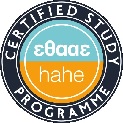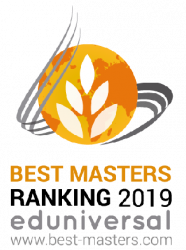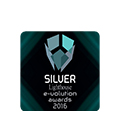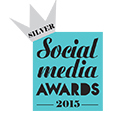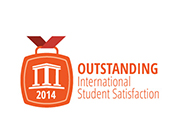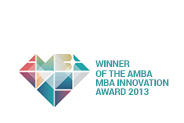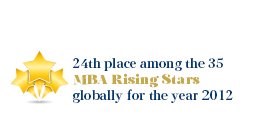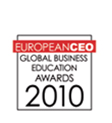 Can an AI recruiter identify a candidate, conduct a first interview, and evaluate them? Can an algorithm predict which employee is about to leave? And can a learning platform map tomorrow’s skills faster than the market changes? These are no longer futuristic questions – they are today’s HR reality, shaped by AI.
Can an AI recruiter identify a candidate, conduct a first interview, and evaluate them? Can an algorithm predict which employee is about to leave? And can a learning platform map tomorrow’s skills faster than the market changes? These are no longer futuristic questions – they are today’s HR reality, shaped by AI.
The true value of AI emerges when it acts not just as a tool, but as a strategic partner: improving decision-making, reducing time and admin load, and creating richer experiences for candidates, employees, and hiring managers.
Global experience shows the pace of change is rapid: Gartner predicts that by 2026, 80% of companies will use GenAI in at least one HR function, while according to a McKinsey study, companies that integrated AI into performance management observed a 15% improvement in overall workforce productivity. In Code.Hub’s annual Greek market survey of 2025, 8.3% reported already using AI for screening & sourcing, interview scheduling, AI-based assessments, predictive analytics, and candidate chatbots, 33.3% were considering adoption, while 58.3% had not yet taken action.
Our key focus is on how AI is applied in practice across three HR pillars: Recruitment, Engagement, and Learning & Development. At Code.Hub, we went beyond ready-made tools and built custom AI models and platforms integrated throughout our 3 main HR pillars of expertise; Recruitment, Engagement and L&D.
AI in Recruitment
For years, traditional recruitment felt like a marathon: multiple calls with hiring managers, heavy task management, and endless candidate reports that required excessive admin time before reaching decision-makers. The need was clear: processes had to become faster and more structured.
To address this challenge, we developed a set of AI-powered automations. We built an AI Modeling Layer with custom LLM models that support job description creation, targeted-persona profiling, and semantic CV parsing to analyze experience, specialization, and career continuity.
For objective evaluation, we built custom AI models that merge job descriptions, CVs, interview notes, and intake insights into quantitative matches across five dimensions: Technical Skills, Soft Skills, Experience Match, Fit for the Role, and Overall Match.
We also leverage AI for predictive analytics, forecasting both project performance and candidate suitability. In a pilot stage, we are testing an AI Recruiter, a virtual recruiter that conducts initial screening calls and produces interview notes, a project that will evolve further in 2026.
All these practices are consolidated in the AI Wiki, a repository of methodologies, processes, and templates, enhanced with an AI chatbot.
The impact is clear: time from intake to shortlist has been reduced by around 50%, overall time-to-fill by 56%, administrative load nearly halved, and hiring manager satisfaction exceeded 95%.
Transitioning required time and training, but the benefits were twofold: stronger results and better experiences. The lesson learned: AI does not create change with the “push of a button;” its true value is unlocked when people adapt it to their needs and turn it into a tool for collaboration.
AI in Employee Engagement
Engagement is one of HR’s toughest challenges, especially in hybrid environments. The gap we identified was the lack of timely data and meaningful feedback loops that could truly benefit our people.
The solution combined new career development models with AI tools. We developed the DevOps Infinity Career Path Model, which creates a continuous cycle of learning and growth. This model does not operate with static levels but with ongoing skills development cycles, allowing employees to clearly see how they can progress within the organization.
AI strengthens the model with personalized insights: automated evaluation narratives transform assessment data into actionable reports, while predictive analytics help us detect early signs of disengagement.
The results are strong: turnover dropped from 16% to 4.2%, while 92% of employees expressed intent to stay in the organization and 98% recognized opportunities for growth and innovation, proving that engagement is not just a metric but a real experience of development.
AI in Learning & Development
Ongoing skills development is central to HR strategy. Our challenge was to move from fragmented initiatives to a complete ecosystem, with AI as a value multiplier.
At its core lies the Training Operations Manager (TOM), a platform unifying the training lifecycle: courses, trainers, participants, schedules, and learning content. AI modules predict needs, optimize scheduling, and strengthen reporting and analytics, reducing administrative workload and allowing learning managers to focus on designing meaningful learning experiences.
We also launched a next-generation Mentoring Program, integrating with HRMS, LMS, and performance tools. Using semantic matching and LLMs it pairs mentors and mentees based on skills, goals, and personality profiles. The program is dynamic, not static: meetings feed into feedback loops, mentees’ journeys are personalized, and AI enhances guidance without replacing the human factor.
The results were measurable: over 80% of participants achieved promotions or role changes, 92% completed their learning goals, while mentee productivity increased by 35% and engagement by 34%.
The third element of this ecosystem is the AI Wiki, a knowledge-sharing tool that accelerates onboarding and provides on-demand learning. With AI support, it works as a dynamic assistant – categorizing, recommending, and updating content based on team needs.
Overall, AI in L&D has enabled us to create a truly integrated learning journey, a holistic approach that makes learning part of everyday life, not a one-off activity.
Conclusion
AI is not just another tool in the HR arsenal, it is redefining how we recruit, engage, and develop people. It empowers rather than replaces by providing better data, more time for meaningful work, sharper insights, and focus on what truly matters – people.
Our aim was not only to showcase our practices but to share insights that can inspire the HR community.
Our proposal is simple: let’s build a new HR culture together, where technology acts as a catalyst and people remain the drivers of change. AI in HR is not a promise of the future. It is already here, shaping the present and defining the future. The question is not if we will use it, but how we will use it best. Because the real competitive advantage of tomorrow will not be AI itself, but the people who know how to collaborate with it.
The next day will not be defined only by the most advanced AI models, but by how we use them to make recruitment faster, engagement deeper, and learning more personalized. If there is one key takeaway from our experience, it is this: AI creates value when it is not a “black box” but an open framework for collaboration, learning, and improvement.







